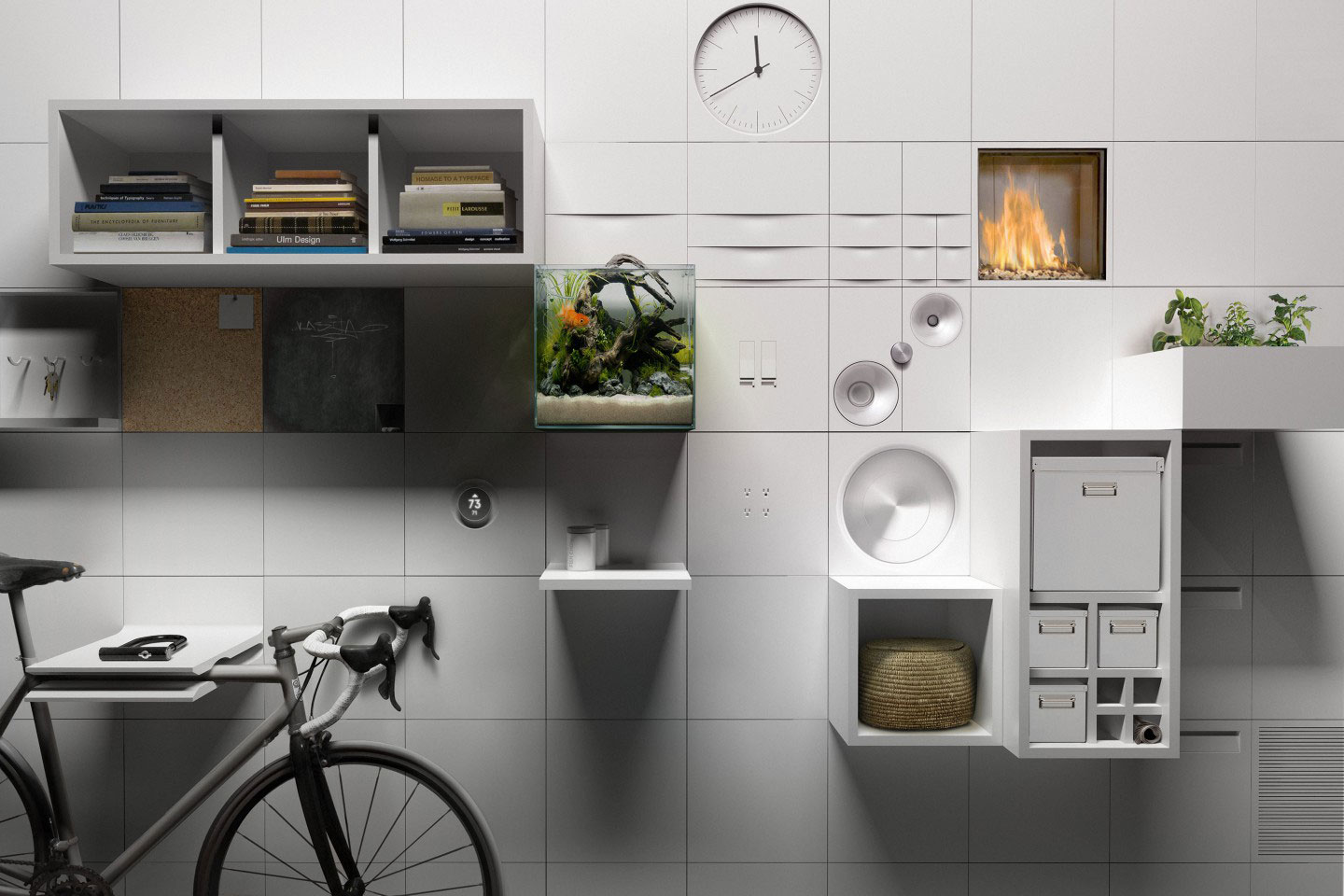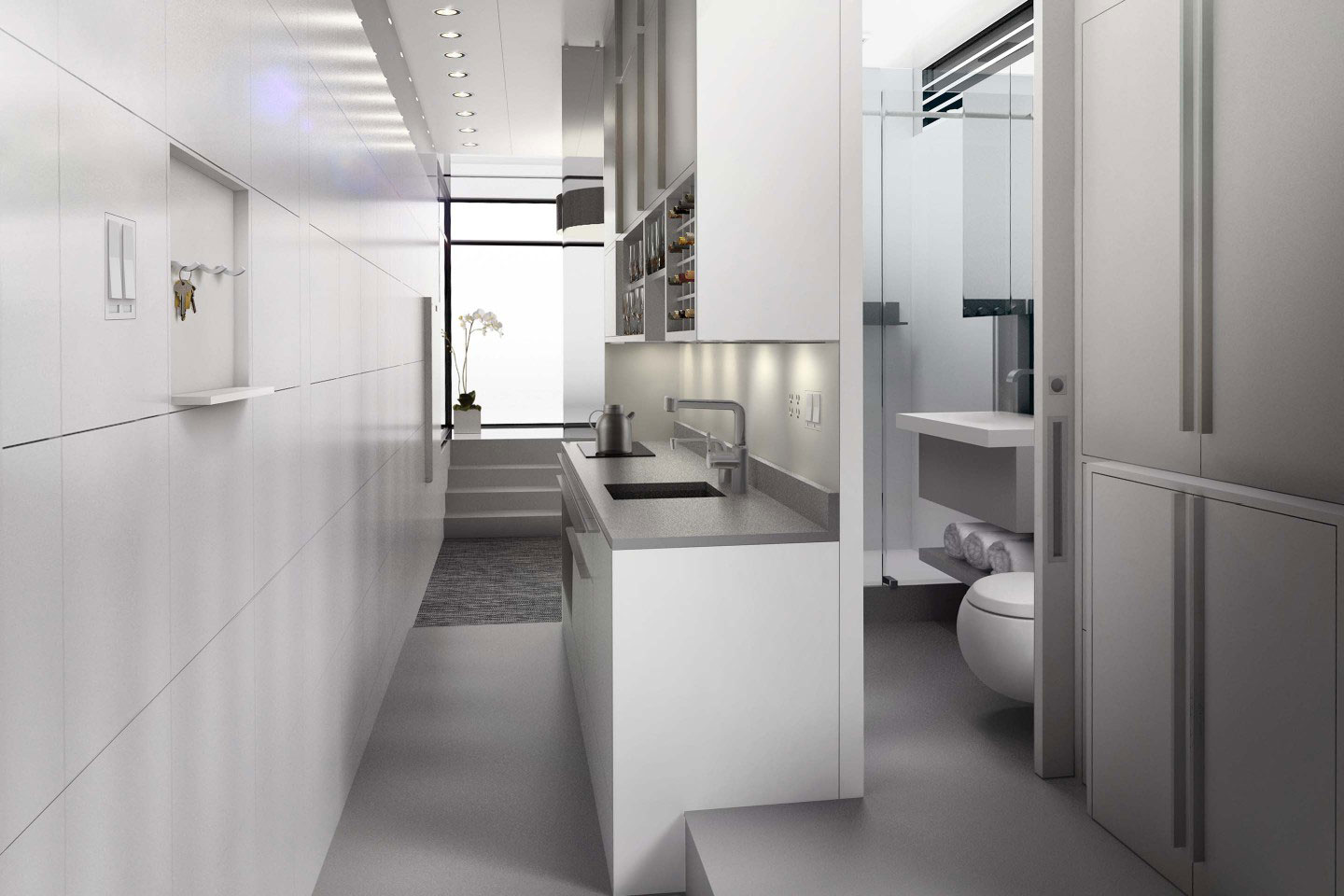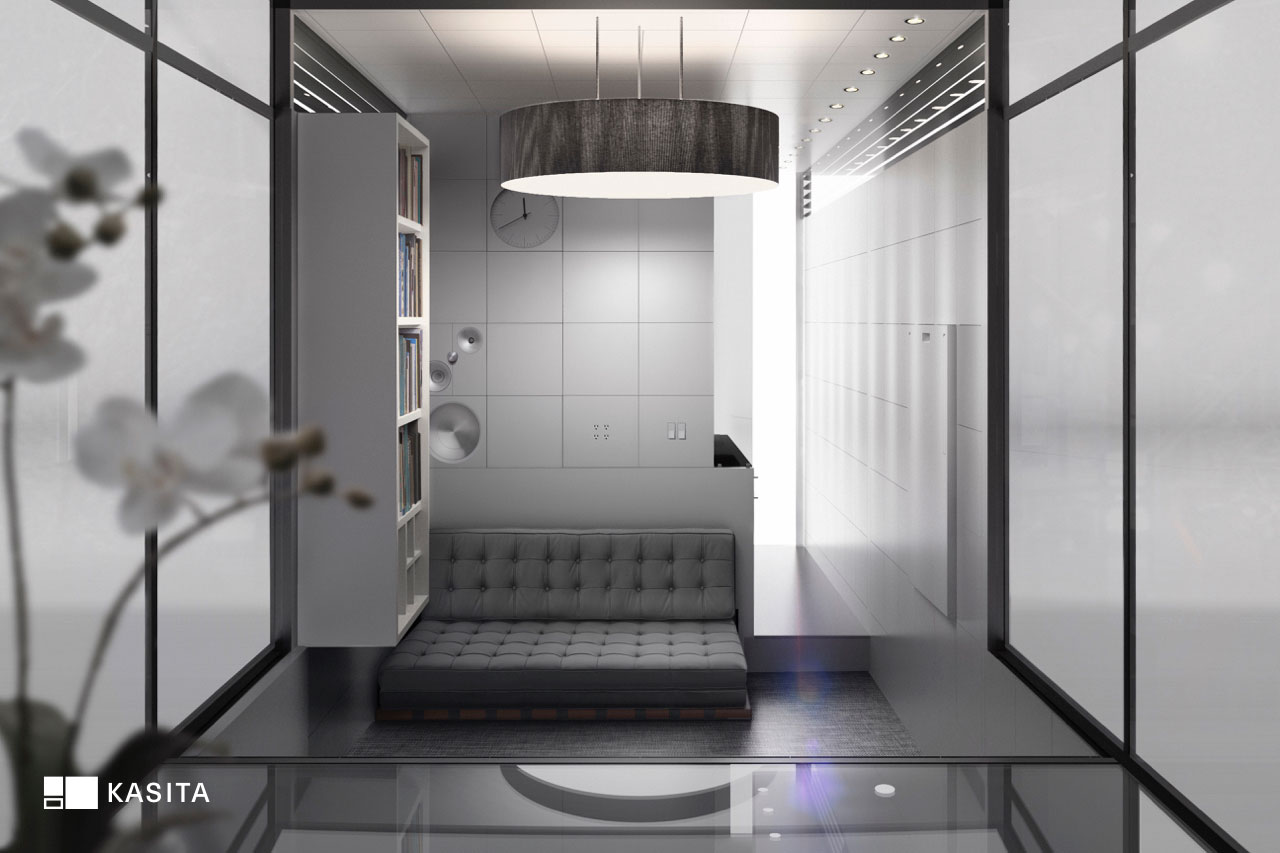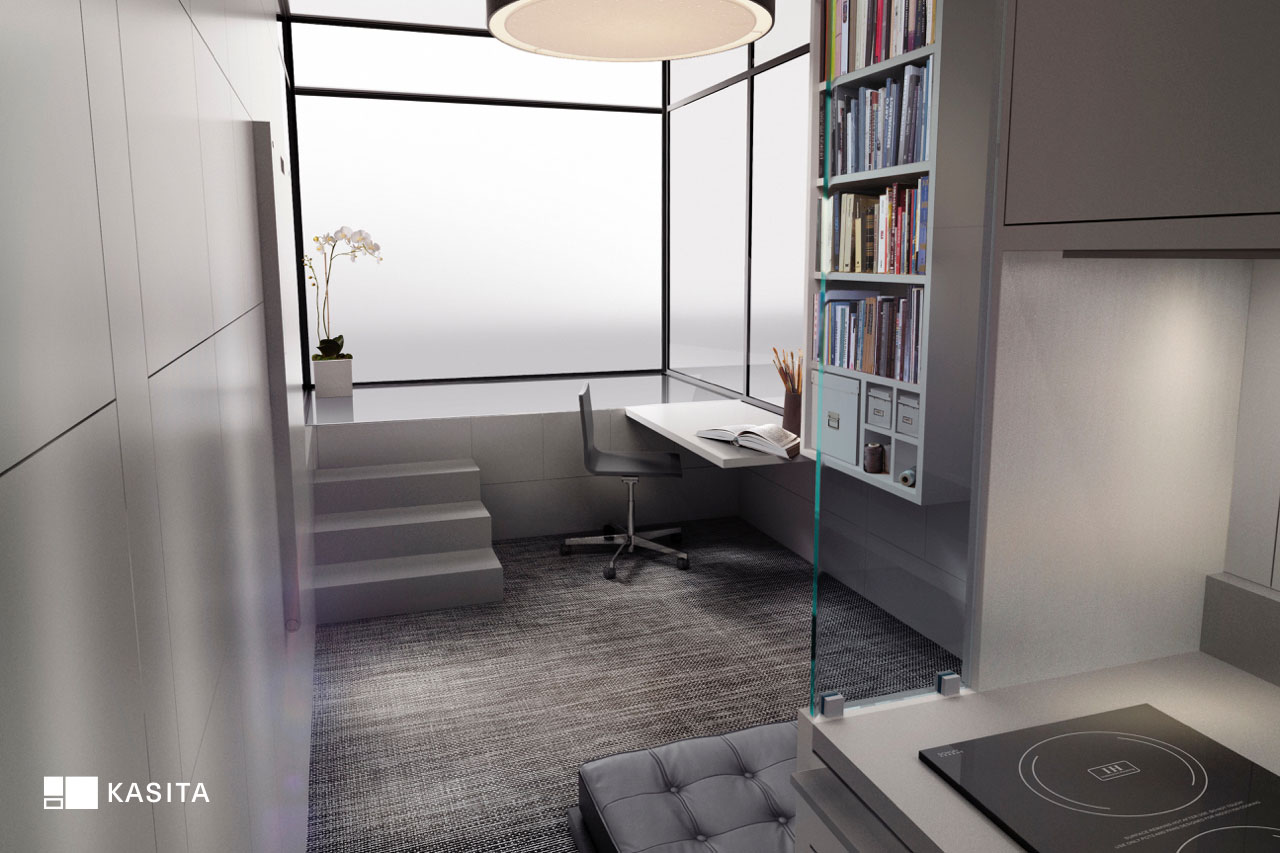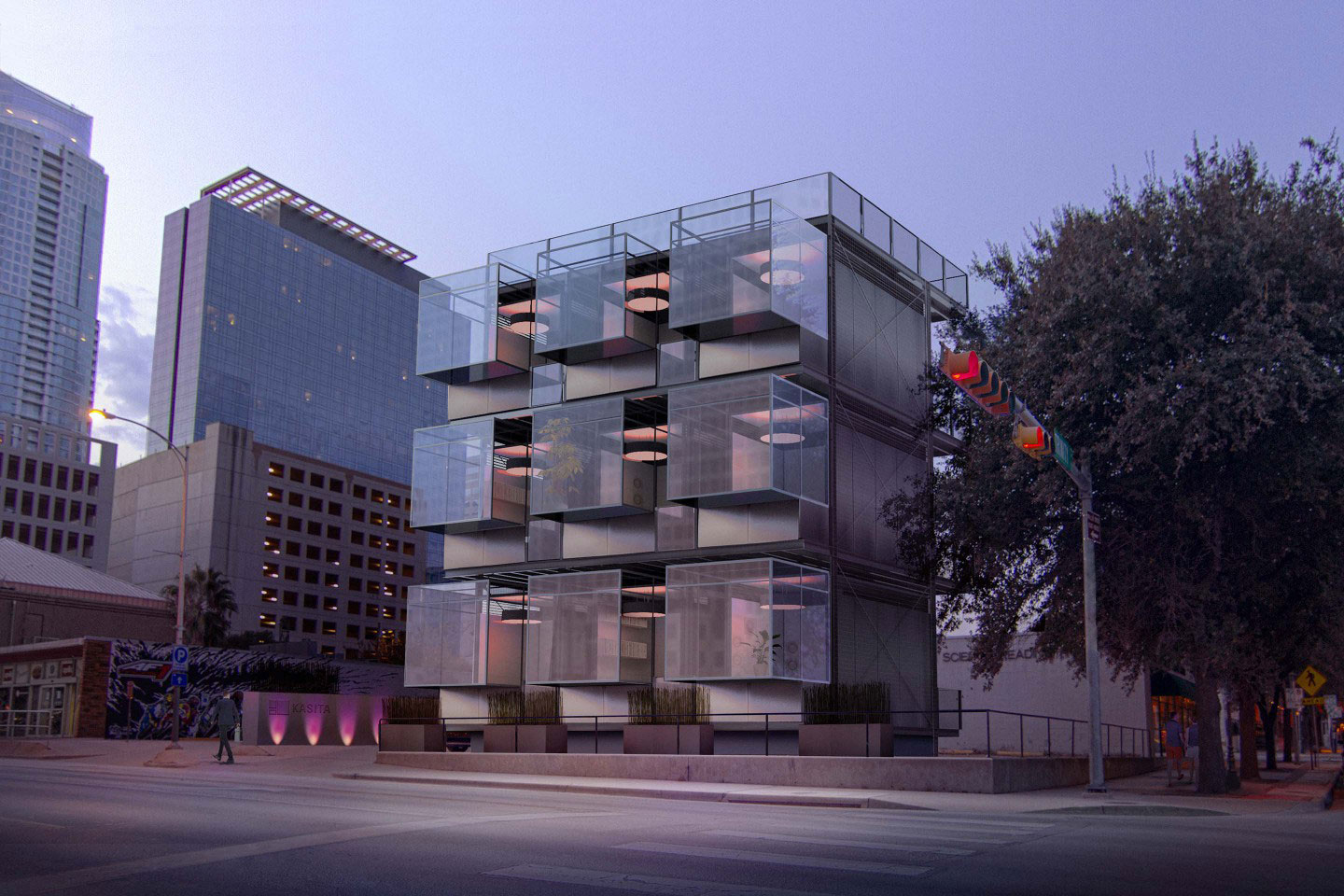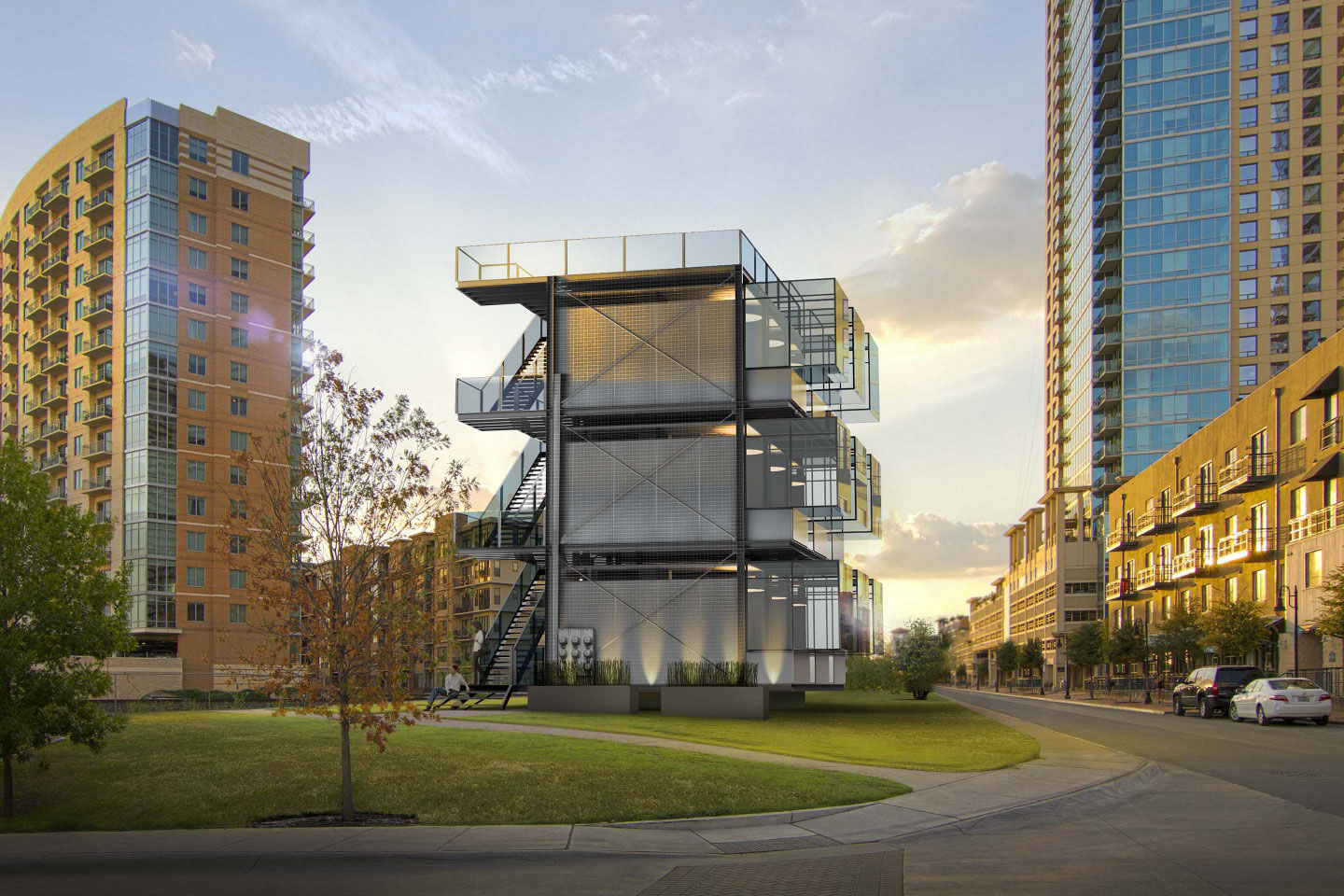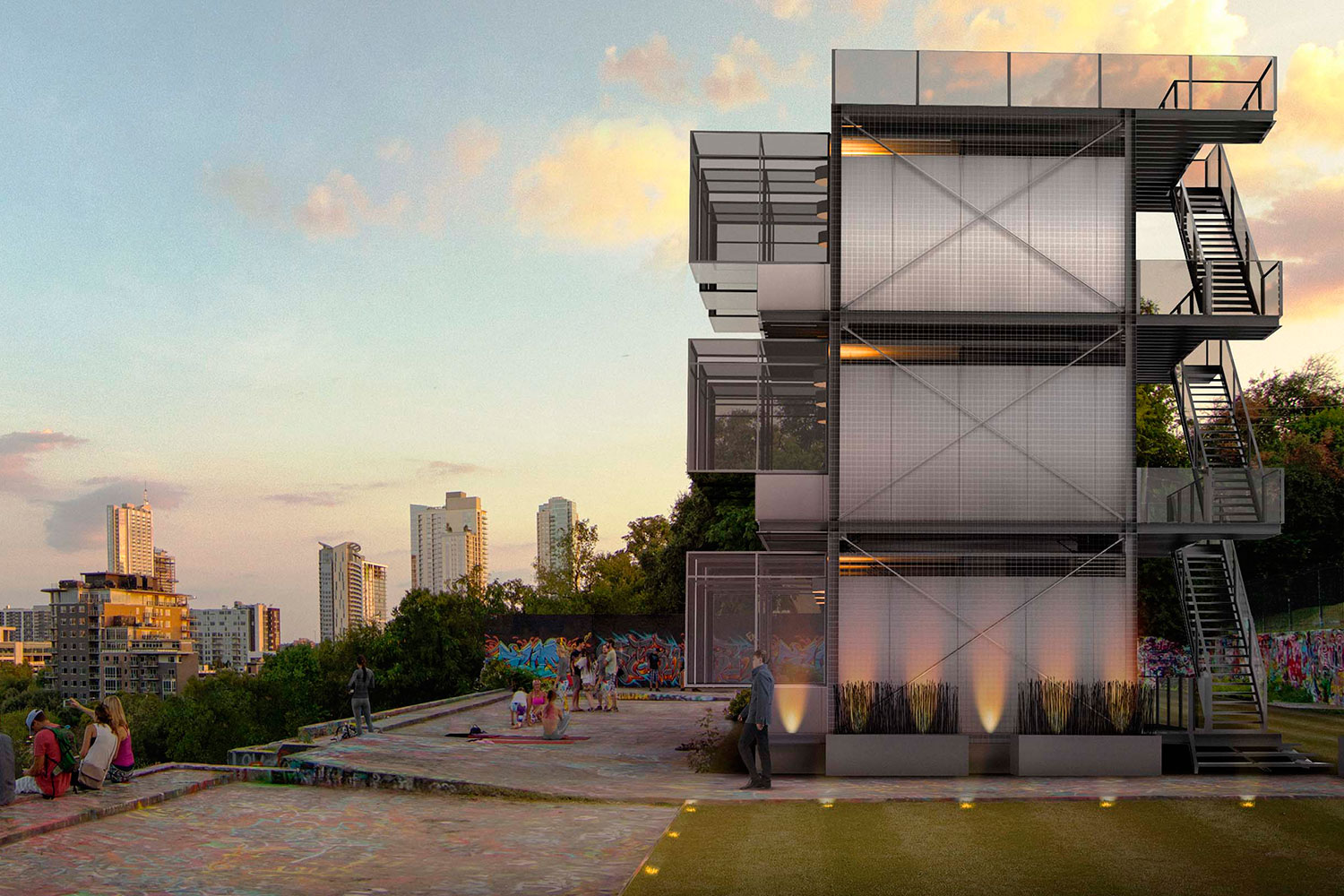You learn a lot about what makes a house a home after living in a dumpster for a year. At least, according to Huston-Tillotson University environmental science professor Jeff Wilson. Nicknamed Professor Dumpster, he’s taking what he learned during the experiment and applying to a new type of housing.
Kasita is the result of a collaboration between Wilson and industrial design firm Frog. He wanted to use what he liked about living in a Dumpster (location, the ability to move his house, scaled-down possessions) and ditch what he didn’t (using a bottle as a bathroom).
“I told him, I want you to design something more like an iPhone than a micro-apartment or a container,” Wilson tells Co.Exist. What Kasita came up with is a 208-square-foot space with a washer, dryer, and full kitchen that hides a slide-out bed. Connected features built into the prefab units include privacy glass that darkens on command and smart lights and music.
The units are the equivalent of six dumpsters, but you’ll still have to make some compromises when it comes to your belongings. Still, Wilson thinks there’s enough room for an occupant, a cat, and a goldfish. The apartment fits into a “rack” that houses other apartments, and each individual unit can slide in and out to fit in a new rack, which can live on unused lands that can’t be developed.
Austin, Texas will get its first rack in spring 2016. While the $600-per-month apartments will plug into the grid, the company eventually wants them to run on solar power stored in Tesla batteries. There are several other cities on the list for future racks, so one day you could hit “move” on your app, and the company will take your whole apartment from Austin to Portland, New York, Tucson, Seattle, or even Stockholm. At least one thing when will be completely familiar when you get to the new city: your entire apartment.
